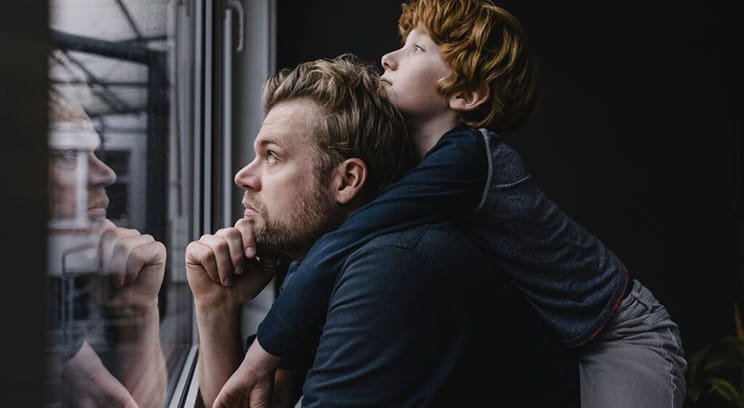In recent years, concerns about the environment and the impacts of climate change have become more widespread.1 Increased media coverage and awareness of environmental issues and the potential consequences of climate change have contributed to the rise of eco-anxiety.2
This article aims to provide guidance on how to support young people who may be struggling with climate change and mental health. By understanding the signs and implementing practical strategies, we can help young people navigate their emotions and support their mental wellbeing. Of course, feelings of anxiety and concern about the environment are not limited to children and teenagers alone, and these tips can also be helpful for adults in managing their own eco-anxiety.
What is eco-anxiety?
Eco-anxiety refers to the feeling of distress, fear, or worry caused by concerns about the environment and the impacts of climate change. It is a psychological response to the overwhelming challenges posed by environmental issues such as deforestation, species extinction, rising sea levels and extreme weather events. It can affect individuals of all ages, including young people, who may be particularly sensitive to the current environmental crisis. Eco-anxiety can manifest in various ways, including feelings of helplessness, sadness, anger, or a sense of impending doom.
Recognising the signs of climate-change anxiety
Some children may want to discuss their eco-anxiety and openly express their concerns about the environment. However, it's important to note that there may be more subtle signs indicating their worries. As Naomi Humber, Head of Mental Wellbeing for Bupa Health Clinics, says, “By recognising the signs early on, parents and carers can provide the necessary support and guidance to help children navigate their feelings of anxiety.”
Look out for the following indicators – both explicit and more subtle – that may suggest your child is experiencing climate-anxiety:
- Sharing persistent or seemingly excessive worries about the environment and climate change
Can include feeling overwhelmed about the state of the planet, future environmental disasters, or the wellbeing of animals and ecosystems. - Fear of climate-related events and their impact
Can include fear or anxiety around extreme weather events, rising sea levels, or the consequences of climate change on our lives and the world. - A change towards school
Can include wanting to avoid school, struggling to manage previously well managed schoolwork, or comments by teachers about their coping or mental wellbeing. - Difficulty sleeping, changes in appetite, or physical symptoms of anxiety
Can include disrupted sleep patterns, changes in appetite, headaches, stomach-aches, or other physical indicators of anxiety. - Irritability, restlessness, or withdrawal from activities
Can include becoming easily agitated, trouble concentrating, or withdrawing from previously enjoyed activities. - Obsessive thoughts or excessive preoccupation
Can include constantly thinking or talking about environmental issues, showing an intense preoccupation with the topic. - Emotional distress in response to environmental news or events
Can include heightened emotional distress, panic or a strong reaction to news reports, documentaries, or discussions about climate change and environmental challenges. - Avoidance of environmental topics or discussions
Can include actively avoiding conversations or situations related to the environment in order to avoid triggering anxiety and discomfort. - Changes in behaviour related to consumption habits
Can include refusing to use certain products, becoming overly fixated on recycling, or displaying excessive guilt about personal carbon footprint.
It is important to note that some of these symptoms could be indicators of clinical anxiety, including, withdrawal from activities, changes in appetite and physical symptoms of anxiety. If your child is displaying concerning behaviours, thoughts or feelings, it is vital that you reach out to a healthcare professional or other support services to access guidance and support.
Create a safe environment and validate concerns
To help children cope with climate change and support their mental health, here are some strategies to consider:
- Establish a safe space for open communication and understanding
- Encourage your child to express their thoughts and concerns about the environment
- Listen attentively without judgment and validate their feelings
- Create opportunities for your child to ask questions
- Provide honest, age-appropriate answers to their questions
- Take time out of your day to engage in discussions about the environment
- Show your child that their concerns are important and that you are there to support them
- Speak to a healthcare professional if you feel there has been a noticeable change in your child’s personality, behaviour, mood and/or functioning due to concerns or issues surrounding the climate or climate change
“Eco-anxiety is a valid response to the environmental crisis we face,” Naomi adds. "A big part of creating a supportive environment is acknowledging that feeling anxious about the climate crisis is not necessarily a sign of mental ill-health but rather a healthy response to the situation we are confronting. By validating your child's feelings and reassuring them that their concerns are understandable, you can create a safe space for them to express their emotions and work through their anxiety. If in doubt and things don’t seem quite right with your child’s mental wellbeing, reach out to a healthcare professional or other support services for young people to access support for you child”.
Educate and empower young people with the right information
Education is a powerful tool in addressing eco-anxiety. By providing your child with accurate information and empowering them to act, you can help ease their anxiety and instil a sense of hope and purpose. Tailor the information you share to your child's age and maturity level, ensuring that it comes from reputable sources.
When explaining concepts like climate change, environmental protection, and sustainability, use language and examples that your child can grasp and understand. Break down complex ideas into simpler terms, relating them to their daily lives and experiences. Encourage their curiosity and questions and be patient in answering them.
It’s also important to help children understand that they cannot solve environmental issues on their own. As Naomi emphasises, "We must strike a balance between raising awareness and empowering children to take action, while also acknowledging that the responsibility for solving these complex issues lies with society as a whole."
Another positive way to tackle overwhelming feelings of climate-anxiety is to highlight positive initiatives and stories of individuals, organisations and communities actively working towards environmental conservation and finding solutions to environmental challenges. Share inspiring examples of how people are making a difference and show your child that positive change is possible, even in the face of daunting challenges.
Promote action and foster engagement
Taking action can empower children and help to ease their eco-anxiety. While it's true that children cannot drive change on their own, engaging in actions as a family can make a significant impact.
Here are some actions you can undertake together:
- Encourage sustainable lifestyle choices
Teach your child about sustainable practices such as reducing waste, conserving energy, and making environmentally friendly consumer choices. Involve them in household activities like recycling or growing their own vegetables. - Support environmental initiatives
Look for local environmental organisations or community projects that your child can participate in. This can include clean-up campaigns, tree-planting events, or educational workshops focused on environmental conservation. - Lead by example
Be a role model by incorporating eco-friendly habits into your own daily life. Show your child that your family is committed to making a positive impact on the environment. - Encourage self-care
Teach your child the importance of self-care activities such as spending time in nature, engaging in hobbies, practicing mindfulness, or participating in activities that bring them joy and relaxation. - Provide a supportive network
Ensure that your child has a strong support system, including friends, family, or mentors who understand and validate their environmental anxiety. Encourage them to connect with like-minded peers or join eco-conscious clubs or organisations where they can find support and share their concerns.
Seek professional help if needed
Seeking professional help is essential if your child's climate change anxiety starts to affect their functioning in some way during their daily life, academic performance, or overall wellbeing. Mental health professionals are trained to address anxiety disorders in children and can provide specialised guidance and support. If you notice that your child's eco-anxiety is interfering with their ability to function, it's important to reach out to a qualified professional. They can assess your child's situation, offer an accurate diagnosis and offer suitable interventions to address their needs.



